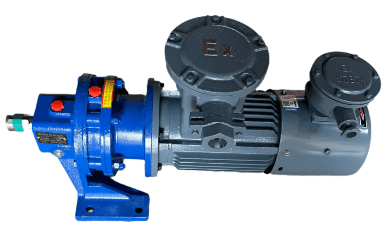In-depth analysis and solutions to reducer faults

WPO70,WPO80,WPO100,WPO120,WPO135 A reducer is a mechanical transmission equipment widely used in various industrial fields. It can reduce the speed of an electric motor or other power source, while amplifying the torque to adapt to various working needs. However, the gearbox may encounter various faults and problems during long-term operation, which not only affect the normal operation of the production line but also increase maintenance costs. This article will delve into the common causes and solutions of gearbox failures.
1、 Common causes of gearbox malfunctions
Gear wear and damage: During long-term operation, the gears in the reducer may experience wear, pitting, peeling, and other phenomena due to material fatigue, overload, poor lubrication, etc., resulting in reduced transmission efficiency and even causing vibration and noise.
Bearing damage: The bearing is an important component that supports the gear shaft. Due to poor lubrication, improper clearance adjustment, excessive load, and other reasons, the bearing may be damaged, leading to displacement and deformation of the gear shaft.
Oil blockage: If the internal oil circuit of the reducer is not regularly cleaned, impurities may accumulate, leading to oil blockage, affecting lubrication efficiency, and even damaging internal parts.
Damaged seal: The seal of the reducer is mainly used to prevent lubricating oil leakage and external impurities from entering. If the seal is damaged or aged, it may cause lubricating oil leakage and affect the normal operation of the reducer.
Basic installation issue: If the installation foundation of the reducer is uneven or lacks rigidity, it may cause vibration and noise of the reducer.
2、 Solution to gearbox malfunction
Regarding gear wear and damage: Regularly check the meshing condition of the gears, and replace the gears in a timely manner when pitting, peeling, and other phenomena are found; Select gear materials with good wear resistance; Optimize gear parameter design to improve gear bearing capacity.
For bearing damage: choose high-quality bearings; Reasonably adjust the bearing clearance; Regularly replace lubricating oil; Avoid bearings bearing excessive loads.
For oil circuit blockage: Regularly clean the internal oil circuit; Select high-quality lubricating oil; Regularly replace the filter element.
For damaged seals: choose high-quality seals; Regularly check the wear of sealing components; Replace damaged seals in a timely manner.
Regarding basic installation issues: ensure that the installation foundation of the gearbox is flat and firm; Perform pre vibration treatment on the foundation to eliminate resonance.
Strengthen equipment maintenance and upkeep: Develop a reasonable maintenance and upkeep plan, and regularly inspect and maintain the gearbox; Regularly clean and replace the lubrication system with lubricating oil; Regularly adjust and replace vulnerable parts of transmission components; Regularly inspect and replace sealing components of the sealing system.
Improve the skill level of operators: provide training on the use and maintenance of gearboxes for operators; Ensure that operators understand the structure, working principle, and operating procedures of the gearbox; Improve the skill level of operators and be able to detect and handle gearbox faults in a timely manner.
Select advanced monitoring equipment: use advanced monitoring equipment to monitor and diagnose the gearbox in real-time; Evaluate the operating status of the gearbox through methods such as vibration analysis and oil sample analysis; Promptly detect and handle potential faults to prevent them from escalating.
-
2024-05-31The WPWD120,WPWD135,WPWD155,WPWD175,WPWD200 helical gear reducer is one of the indispensable key equipment in modern industrial production. It can stably reduce...Details +
-
ZJY180 hard tooth surface gear reducer
2024-05-31WPW155,WPW175,WPW200,WPW250,WPWD40 Gear reducer is a widely used mechanical equipment in various fields, and it is highly favored by users for its efficient and...Details + -
DCY355-40-1 Hardened bevel gear reducer
2024-05-30In various industries, the application of mechanical equipment is indispensable. In mechanical equipment,WPWDKV70,WPWDKV80,WPWDKV100,WPWDKV120,WPWDKV135 the...Details + -
Working principle of ZQ850-48.57-1 gear reducer
2024-05-30WPEEDO70-120,WPEEDO80-135,WPEEDO80-147,WPEEDO100-155,WPEEDO120-175 Gear reducers are indispensable power transmission devices in modern industrial fields, JZQ85...Details +







